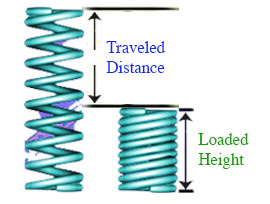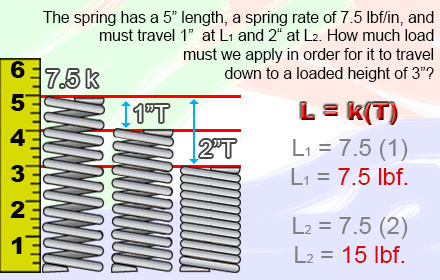Spring Load & Rate
Attention! Input results shown will be +/- 10% from middle value. Hint: The closer your min and max inputs are, the more accurate your results will be!
Attention! Input results shown will be +/- 10% from middle value. Hint: The closer your min and max inputs are, the more accurate your results will be!
Attention! Input results shown will be +/- 10% from middle value. Hint: The closer your min and max inputs are, the more accurate your results will be!
Load and rate are two ways that are used to measure the force generated by a spring. The two are related, although not identical. Rate is the amount of force generated by the spring at 1 inch of deflection. Load is the amount of force generated by a spring at a specific distance traveled. When trying to search for a spring to match a specific load, you need to know the force and travel. Whereas with rate, if you know the force generated, the distance can be assumed to be an inch.
The physical properties of the spring work together to determine the strength of a spring, some to greater extent than others. Increasing the wire diameter, decreasing the outer diameter, or decreasing the number of total coils are all ways to increase the strength of your spring and produce a stronger rate and load. If one of these factors cannot be changed, the others can still be manipulated to produce results. This allows you to change rates of springs that may go over shafts or holes, or have strict solid height requirements.

These two concepts are similar, and we can relate them mathematically. The equation below illustrates this relationship:
LOAD = RATE X DISTANCE TRAVELED
This allows us to easily convert between the two terms when one becomes more convenient to use. Our spring finder tool, for example, allows you to narrow down the search for springs based on their rate. If you only know load and distance traveled you can rearrange the equation to find the rate, and therefore search for the required spring.
Typically, rates are expressed in units of pounds per inch in english measurements and newtons per millimeter in metric measurements. Our spring creator tool can work with both of these forms of measurement. Occasionally, rates can be given in pascals or kilopascal. If this is the case, conversion will be necessary before any of our online tools can be used.





